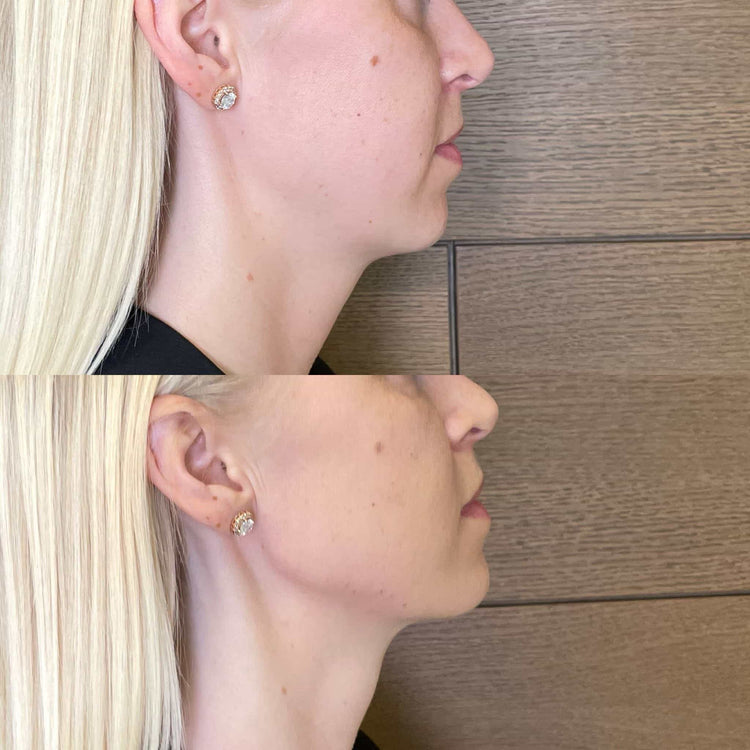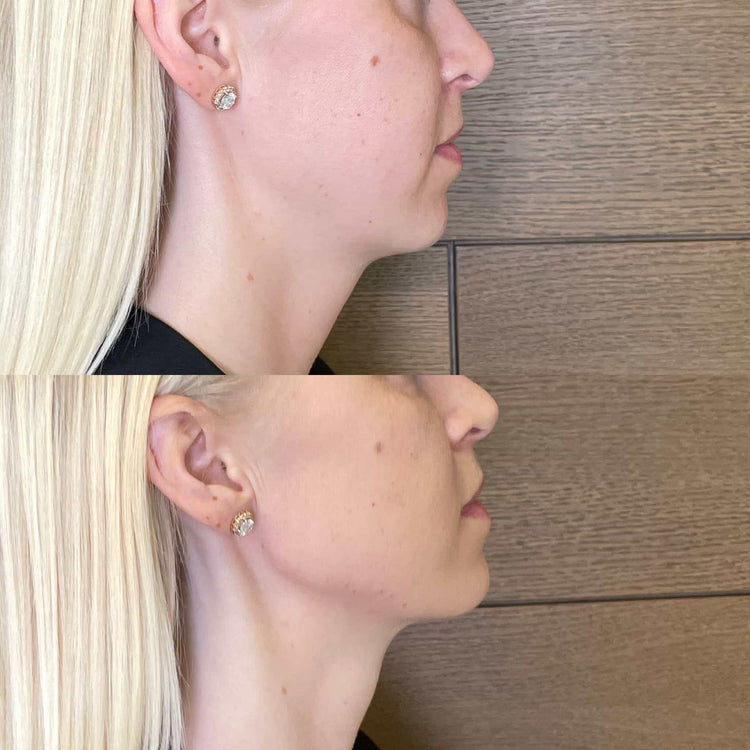Jaw Fillers for Enhancing Jawline and Cheeks
Jaw fillers have become increasingly popular for their ability to contour facial features, particularly the jawline and cheeks. This non-surgical treatment utilizes dermal fillers, typically hyaluronic acid based, to add volume and definition to these areas.
Let me know if you’d like me to continue writing!
Types of Filler Used
Hyaluronic acid is a naturally occurring substance in the body that helps maintain skin hydration and elasticity. When injected as a filler, it attracts and holds water, creating a plumping effect.
Other types of fillers, such as poly-L-lactic acid (PLLA), may also be used for jawline enhancement. PLLA stimulates collagen production over time, resulting in gradual volume increase and contour definition.
The choice of filler depends on individual needs and desired outcome, as well as the expertise of the administering practitioner.
Procedure and Technique
Jaw fillers can indeed enhance both the jawline and cheek area simultaneously. A skilled injector can strategically place the filler to sculpt and define both areas, creating a more balanced and harmonious facial profile.
During the procedure, a local anesthetic is typically used to ensure patient comfort. The filler is then injected using fine needles into specific points along the jawline and cheeks. The amount of filler required varies depending on individual anatomy and desired results.
After the treatment, patients may experience mild swelling and bruising, which usually subsides within a few days. Results from jaw fillers are typically visible immediately and can last for several months to a year, depending on the type of filler used and individual metabolism.
Benefits
Jaw fillers have become increasingly popular for their ability to contour facial features, particularly the jawline and cheeks. This non-surgical treatment utilizes dermal fillers, typically hyaluronic acid based, to add volume and definition to these areas.
Hyaluronic acid is a naturally occurring substance in the body that helps maintain skin hydration and elasticity. When injected as a filler, it attracts and holds water, creating a plumping effect.
Other types of fillers, such as poly-L-lactic acid (PLLA), may also be used for jawline enhancement. PLLA stimulates collagen production over time, resulting in gradual volume increase and contour definition.
The choice of filler depends on individual needs and desired outcome, as well as the expertise of the administering practitioner.
Jaw fillers can indeed enhance both the jawline and cheek area simultaneously. A skilled injector can strategically place the filler to sculpt and define both areas, creating a more balanced and harmonious facial profile.
During the procedure, a local anesthetic is typically used to ensure patient comfort. The filler is then injected using fine needles into specific points along the jawline and cheeks. The amount of filler required varies depending on individual anatomy and desired results.
After the treatment, patients may experience mild swelling and bruising, which usually subsides within a few days. Results from jaw fillers are typically visible immediately and can last for several months to a year, depending on the type of filler used and individual metabolism.
Improved Jawline Definition

Jaw fillers have become increasingly popular for their ability to contour facial features, particularly the jawline and cheeks. This non-surgical treatment utilizes dermal fillers, typically hyaluronic acid based, to add volume and definition to these areas.
Hyaluronic acid is a naturally occurring substance in the body that helps maintain skin hydration and elasticity. When injected as a filler, it attracts and holds water, creating a plumping effect.
Other types of fillers, such as poly-L-lactic acid (PLLA), may also be used for jawline enhancement. PLLA stimulates collagen production over time, resulting in gradual volume increase and contour definition.
The choice of filler depends on individual needs and desired outcome, as well as the expertise of the administering practitioner.
Jaw fillers can indeed enhance both the jawline and cheek area simultaneously. A skilled injector can strategically place the filler to sculpt and define both areas, creating a more balanced and harmonious facial profile.
During the procedure, a local anesthetic is typically used to ensure patient comfort. The filler is then injected using fine needles into specific points along the jawline and cheeks. The amount of filler required varies depending on individual anatomy and desired results.
After the treatment, patients may experience mild swelling and bruising, which usually subsides within a few days. Results from jaw fillers are typically visible immediately and can last for several months to a year, depending on the type of filler used and individual metabolism.
Enhanced Cheek Volume
Jaw fillers have become increasingly popular for their ability to contour facial features, particularly the jawline and cheeks. This non-surgical treatment utilizes dermal fillers, typically hyaluronic acid based, to add volume and definition to these areas.
Hyaluronic acid is a naturally occurring substance in the body that helps maintain skin hydration and elasticity. When injected as a filler, it attracts and holds water, creating a plumping effect.
Other types of fillers, such as poly-L-lactic acid (PLLA), may also be used for jawline enhancement. PLLA stimulates collagen production over time, resulting in gradual volume increase and contour definition.
The choice of filler depends on individual needs and desired outcome, as well as the expertise of the administering practitioner.
Jaw fillers can indeed enhance both the jawline and cheek area simultaneously. A skilled injector can strategically place the filler to sculpt and define both areas, creating a more balanced and harmonious facial profile.
During the procedure, a local anesthetic is typically used to ensure patient comfort. The filler is then injected using fine needles into specific points along the jawline and cheeks. The amount of filler required varies depending on individual anatomy and desired results.
After the treatment, patients may experience mild swelling and bruising, which usually subsides within a few days. Results from jaw fillers are typically visible immediately and can last for several months to a year, depending on the type of filler used and individual metabolism.
Symmetry and Balance
Jaw fillers have become increasingly popular for their ability to contour facial features, particularly the jawline and cheeks. This non-surgical treatment utilizes dermal fillers, typically hyaluronic acid based, to add volume and definition to these areas.
Hyaluronic acid is a naturally occurring substance in the body that helps maintain skin hydration and elasticity. When injected as a filler, it attracts and holds water, creating a plumping effect.
Other types of fillers, such as poly-L-lactic acid (PLLA), may also be used for jawline enhancement. PLLA stimulates collagen production over time, resulting in gradual volume increase and contour definition.
The choice of filler depends on individual needs and desired outcome, as well as the expertise of the administering practitioner.
Jaw fillers can indeed enhance both the jawline and cheek area simultaneously. A skilled injector can strategically place the filler to sculpt and define both areas, creating a more balanced and harmonious facial profile.
During the procedure, a local anesthetic is typically used to ensure patient comfort. The filler is then injected using fine needles into specific points along the jawline and cheeks. The amount of filler required varies depending on individual anatomy and desired results.
After the treatment, patients may experience mild swelling and bruising, which usually subsides within a few days. Results from jaw fillers are typically visible immediately and can last for several months to a year, depending on the type of filler used and individual metabolism.
Risks and Side Effects
Jaw fillers have become increasingly popular for their ability to contour facial features, particularly the jawline and cheeks. This non-surgical treatment utilizes dermal fillers, typically hyaluronic acid based, to add volume and definition to these areas.

Hyaluronic acid is a naturally occurring substance in the body that helps maintain skin hydration and elasticity. When injected as a filler, it attracts and holds water, creating a plumping effect.
Other types of fillers, such as poly-L-lactic acid (PLLA), may also be used for jawline enhancement. PLLA stimulates collagen production over time, resulting in gradual volume increase and contour definition.
The choice of filler depends on individual needs and desired outcome, as well as the expertise of the administering practitioner.
Jaw fillers can indeed enhance both the jawline and cheek area simultaneously. A skilled injector can strategically place the filler to sculpt and define both areas, creating a more balanced and harmonious facial profile.
During the procedure, a local anesthetic is typically used to ensure patient comfort. The filler is then injected using fine needles into specific points along the jawline and cheeks. The amount of filler required varies depending on individual anatomy and desired results.
After the treatment, patients may experience mild swelling and bruising, which usually subsides within a few days. Results from jaw fillers are typically visible immediately and can last for several months to a year, depending on the type of filler used and individual metabolism.
Like any medical procedure, jaw fillers carry certain risks and side effects. While generally considered safe, potential complications include:
- Swelling
- Bruising
- Redness
- Infection
- Uneven results
- Allergic reactions
- Lumps or nodules
It’s crucial to consult with a qualified and experienced practitioner who has expertise in facial injectables. They will assess your individual needs, discuss potential risks and benefits, and guide you through the process.
Recovery Process
Jaw fillers have become increasingly popular for their ability to contour facial features, particularly the jawline and cheeks. This non-surgical treatment utilizes dermal fillers, typically hyaluronic acid based, to add volume and definition to these areas.
Hyaluronic acid is a naturally occurring substance in the body that helps maintain skin hydration and elasticity. When injected as a filler, it attracts and holds water, creating a plumping effect. Other types of fillers, such as poly-L-lactic acid (PLLA), may also be used for jawline enhancement. PLLA stimulates collagen production over time, resulting in gradual volume increase and contour definition.
The choice of filler depends on individual needs and desired outcome, as well as the expertise of the administering practitioner. Jaw fillers can indeed enhance both the jawline and cheek area simultaneously. A skilled injector can strategically place the filler to sculpt and define both areas, creating a more balanced and harmonious facial profile.
During the procedure, a local anesthetic is typically used to ensure patient comfort. The filler is then injected using fine needles into specific points along the jawline and cheeks. The amount of filler required varies depending on individual anatomy and desired results. After the treatment, patients may experience mild swelling and bruising, which usually subsides within a few days. Results from jaw fillers are typically visible immediately and can last for several months to a year, depending on the type of filler used and individual metabolism.
Like any medical procedure, jaw fillers carry certain risks and side effects. While generally considered safe, potential complications include: swelling, bruising, redness, infection, uneven results, allergic reactions, lumps or nodules. It’s crucial to consult with a qualified and experienced practitioner who has expertise in facial injectables. They will assess your individual needs, discuss potential risks and benefits, and guide you through the process.
Cost and Duration of Results
Jaw fillers have become increasingly popular for their ability to contour facial features, particularly the jawline and cheeks. This non-surgical treatment utilizes dermal fillers, typically hyaluronic acid based, to add volume and definition to these areas.
Hyaluronic acid is a naturally occurring substance in the body that helps maintain skin hydration and elasticity. When injected as a filler, it attracts and holds water, creating a plumping effect.
Other types of fillers, such as poly-L-lactic acid (PLLA), may also be used for jawline enhancement. PLLA stimulates collagen production over time, resulting in gradual volume increase and contour definition.
The choice of filler depends on individual needs and desired outcome, as well as the expertise of the administering practitioner.
Jaw fillers can indeed enhance both the jawline and cheek area simultaneously. A skilled injector can strategically place the filler to sculpt and define both areas, creating a more balanced and harmonious facial profile.

During the procedure, a local anesthetic is typically used to ensure patient comfort. The filler is then injected using fine needles into specific points along the jawline and cheeks. The amount of filler required varies depending on individual anatomy and desired results.
After the treatment, patients may experience mild swelling and bruising, which usually subsides within a few days. Results from jaw fillers are typically visible immediately and can last for several months to a year, depending on the type of filler used and individual metabolism.
The cost of jaw fillers in Surrey can vary depending on factors such as the practitioner’s experience, the amount of filler used, and the specific location of treatment.
However, you can generally expect to pay between £300 and £800 per syringe of filler.
The duration of results also varies depending on the type of filler used. Hyaluronic acid fillers typically last for several months, while PLLA fillers may provide longer-lasting results, sometimes up to two years.
Finding a Qualified Practitioner in Surrey
Finding a qualified practitioner in Surrey who specializes in jaw fillers is essential to ensure safe and effective treatment. Look for practitioners who are:
- Registered with a governing body like the General Dental Council or the Nursing and Midwifery Council
- Experienced in facial aesthetics and have a portfolio of before-and-after photos showcasing their work
- Use high-quality, reputable filler products
- Provide thorough consultations to discuss your goals, concerns, and medical history
You can search online for practitioners in Surrey who specialize in jaw fillers. Websites like RealSelf and the British Association of Cosmetic Nurses (BACN) also offer directories of qualified practitioners.
Don’t hesitate to ask potential practitioners about their experience, qualifications, and any questions you may have before making a decision.
- Filler For Lower Face Wrinkles In Lingfield, Surrey - September 23, 2025
- Downturned Smile Treatment Near Longcross, Surrey - September 20, 2025
- Dermal Fillers In Salfords, Surrey - September 19, 2025
